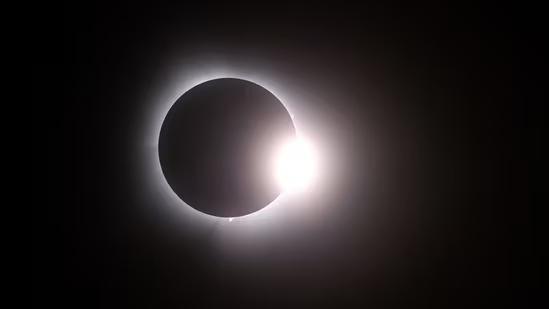
2027 Solar Eclipse to Bring Longest Darkness of the Century
A rare and awe-inspiring phenomenon is set to occur on August 2, 2027, as a total solar eclipse will bring the longest period of darkness this century. This extraordinary event will produce a maximum duration of totality lasting up to 6 minutes and 23 seconds, leaving observers in the path of totality in a state of wonder and marvel. The eclipse will begin over the Atlantic Ocean, before making landfall near the Strait of Gibraltar, and will subsequently traverse across southern Spain, Morocco, Algeria, Tunisia, Libya, Egypt, and the Middle East.
The path of totality, which is the narrow region on the Earth’s surface where the eclipse will be visible in its entirety, will cover a significant portion of the northern hemisphere. The eclipse will start at approximately 10:00 UTC, with the moon’s shadow first making contact with the Earth’s surface over the Atlantic Ocean. As the moon continues to move in front of the sun, the path of totality will gradually shift eastward, bringing the eclipse to the attention of millions of people across the globe.
The total solar eclipse of 2027 is particularly notable due to its unusually long duration of totality. The maximum duration of 6 minutes and 23 seconds will occur at a point in the Atlantic Ocean, approximately 1,000 km west of the coast of Africa. However, observers in the path of totality on land will still experience an impressive 4-5 minutes of darkness, as the moon’s shadow engulfs the sun, revealing the ethereal beauty of the solar corona.
The eclipse will have a significant impact on the regions it touches, with many countries and cities preparing for the influx of tourists and astronomy enthusiasts. Southern Spain, in particular, is expected to be a popular destination, as the eclipse will be visible in its entirety from the regions of Andalusia and Extremadura. Morocco, Algeria, and Tunisia will also experience the eclipse in all its glory, with the path of totality covering significant portions of these countries.
As the eclipse moves eastward, it will bring darkness to the Middle East, with countries such as Libya and Egypt experiencing the full effects of the moon’s shadow. The eclipse will be a significant event in these regions, with many people gathering to witness the rare phenomenon. The eclipse will also be visible in parts of Asia, although the path of totality will not extend beyond the Middle East.
The 2027 total solar eclipse is a rare opportunity for scientists to study the sun’s corona, which is only visible during a total solar eclipse. The corona is the outer atmosphere of the sun, and it is much hotter than the sun’s surface. Scientists will use the eclipse to study the corona in unprecedented detail, using a range of instruments and techniques to gather data on its temperature, composition, and behavior.
In addition to its scientific significance, the 2027 total solar eclipse is also a cultural and spiritual event. Many people believe that eclipses have spiritual or mystical significance, and the 2027 eclipse is no exception. In some cultures, eclipses are seen as a time of renewal and transformation, while in others they are viewed as a sign of impending doom or disaster.
As the date of the eclipse approaches, many people are preparing for the event by purchasing specialized glasses or handheld solar viewers. These devices allow observers to safely view the eclipse, without damaging their eyes. It is essential to use proper eye protection during an eclipse, as looking directly at the sun can cause serious eye damage or even blindness.
In conclusion, the 2027 total solar eclipse is a rare and awe-inspiring event that will bring the longest period of darkness this century. The eclipse will be visible in its entirety from a narrow region on the Earth’s surface, stretching from the Atlantic Ocean to the Middle East. The event is a significant opportunity for scientists to study the sun’s corona, and it is also a cultural and spiritual phenomenon that will be experienced by millions of people around the world.
For more information on the 2027 total solar eclipse, including maps, viewing tips, and scientific background, please visit the official NASA website or other reputable sources.





